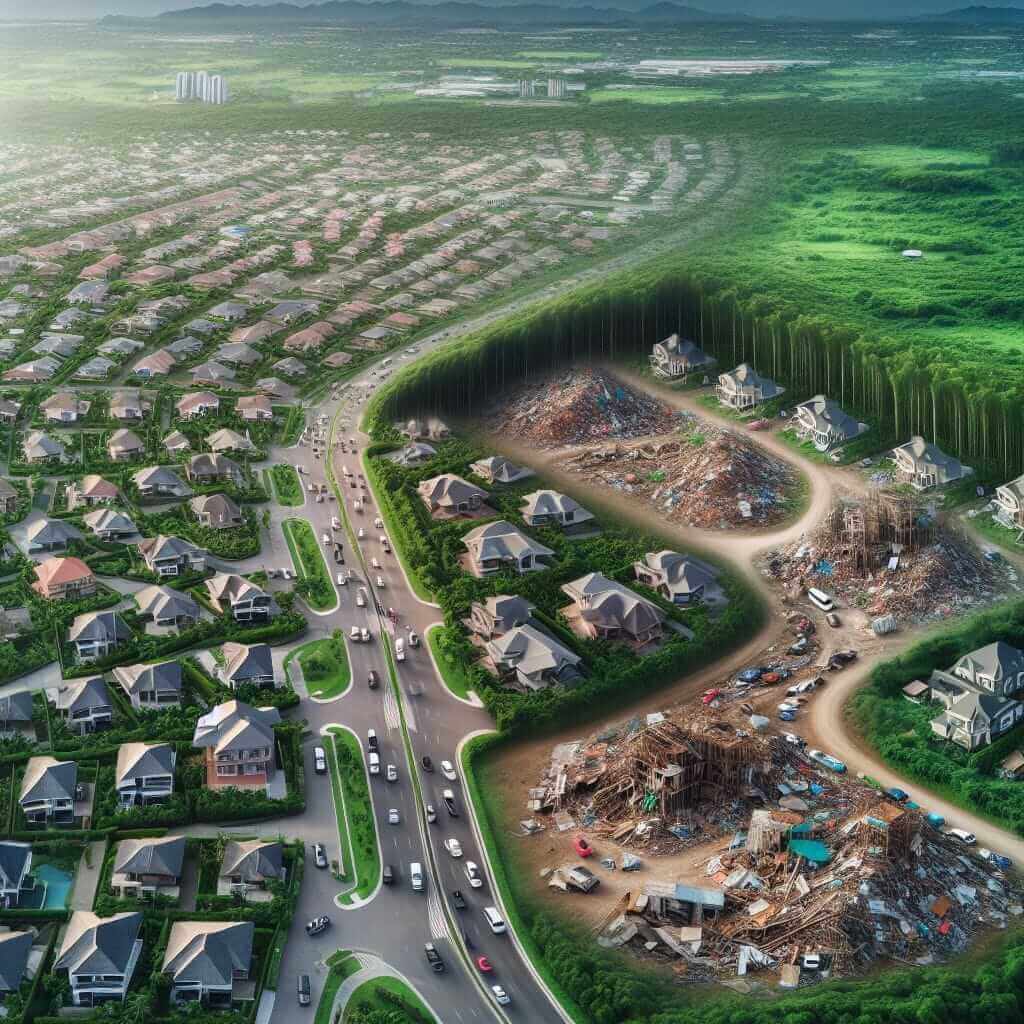Urban sprawl, an issue gaining increasing attention, has profound effects on environmental sustainability. This topic, which asks candidates to explore the environmental impacts of urbanization, often appears in IELTS Writing Task 2. In this article, we’ll delve deep into the keywords, analyze sample questions, and provide a comprehensive sample essay. We’ll also present vocabulary and grammatical tips to aid students in crafting a high-scoring response.
Sample IELTS Writing Task 2 Topics on Urban Sprawl
- Discuss the environmental impacts of urban sprawl.
- Urban sprawl has both positive and negative effects on cities’ sustainability. Discuss both views and give your opinion.
- To what extent does urban sprawl contribute to environmental degradation?
Chosen Topic for Analysis
For this article, we’ll focus on the first topic: “Discuss the environmental impacts of urban sprawl.”
Analyzing the Topic
This topic requires you to:
- Identify the key environmental impacts of urban sprawl.
- Organize these impacts clearly and logically.
- Discuss each impact in detail, supported by relevant examples or evidence.
Sample Essay
Urban sprawl, characterized by the unchecked expansion of cities into surrounding rural areas, poses significant threats to environmental sustainability. This essay will discuss several adverse environmental impacts of urban sprawl, including habitat destruction, increased pollution, and greater reliance on automobiles.
Firstly, urban sprawl often leads to the destruction of natural habitats. As cities expand, forests, wetlands, and other natural areas are cleared to make way for new developments. This habitat destruction can result in the loss of biodiversity, as many species are unable to adapt to the changing environment or find new habitats. For example, the expansion of metropolitan areas in the United States has led to a decline in populations of various species, including the endangered monarch butterfly.
Secondly, urban sprawl contributes significantly to increased pollution. The expansion of urban areas typically involves more construction activities, which release pollutants into the air and waterways. Additionally, as people move further away from city centers, they often rely heavily on fossil fuels for daily commuting. This increased vehicle usage not only contributes to air pollution but also leads to higher greenhouse gas emissions. Studies have shown that suburban areas have significantly higher per capita carbon footprints compared to urban areas.
Lastly, urban sprawl results in greater reliance on automobiles, exacerbating environmental issues. With sprawling urban landscapes, public transportation options become less viable and efficient, leading to an increased dependency on personal vehicles. This reliance results in more traffic congestion, higher fuel consumption, and increased emissions of harmful gases. The urban sprawl in cities like Los Angeles is a prime example, where the dependency on cars has led to severe air pollution and frequent smog events.
In conclusion, urban sprawl presents various challenges to environmental sustainability, including habitat destruction, increased pollution, and greater reliance on automobiles. Addressing these issues requires thoughtful urban planning that prioritizes sustainable development practices, such as preserving natural habitats, promoting public transportation, and reducing reliance on fossil fuels. Only through such measures can the negative impacts of urban sprawl be mitigated. (276 words)

Key Considerations When Writing Your Essay
Vocabulary Tips
- Use specific terminology related to environmental science, such as “biodiversity,” “carbon footprint,” and “fossil fuels.”
- Avoid repetition by using synonyms, such as “expansion” for “sprawl.”
Grammar Tips
- Use complex sentences to demonstrate a sophisticated understanding of English, such as “As cities expand, forests, wetlands, and other natural areas are cleared to make way for new developments.”
- Employ passive voice appropriately, as demonstrated in “urban sprawl is characterized by.”
Key Vocabulary to Remember
- Habitat destruction (noun): /ˈhæbɪtæt dɪˈstrʌkʃən/ – The process by which natural habitat becomes incapable of supporting its native species.
- Biodiversity (noun): /ˌbaɪoʊdaɪˈvɜːrsɪti/ – The variety of plant and animal life in a particular habitat.
- Carbon footprint (noun): /ˈkɑːrbən ˈfʊtprɪnt/ – The amount of carbon dioxide emissions for which an individual or organization is responsible.
- Fossil fuels (noun): /ˈfɒsɪl fjuːlz/ – Natural fuels formed from the remains of living organisms, such as coal and oil.
- Sustainability (noun): /səˌsteɪnəˈbɪlɪti/ – The ability to be maintained at a certain rate or level without depleting resources.
Conclusion
Understanding the environmental impacts of urban sprawl is crucial for crafting a high-quality IELTS essay. By focusing on clear organization, specific vocabulary, and complex sentence structures, you can effectively address this challenging topic. Consider practicing with related topics to further hone your skills:
- “How can urban planning address the challenges of urban sprawl?”
- “What role can public transportation play in mitigating the effects of urban sprawl?”
Continued practice and familiarity with the subject will greatly enhance your writing performance in the IELTS exam.